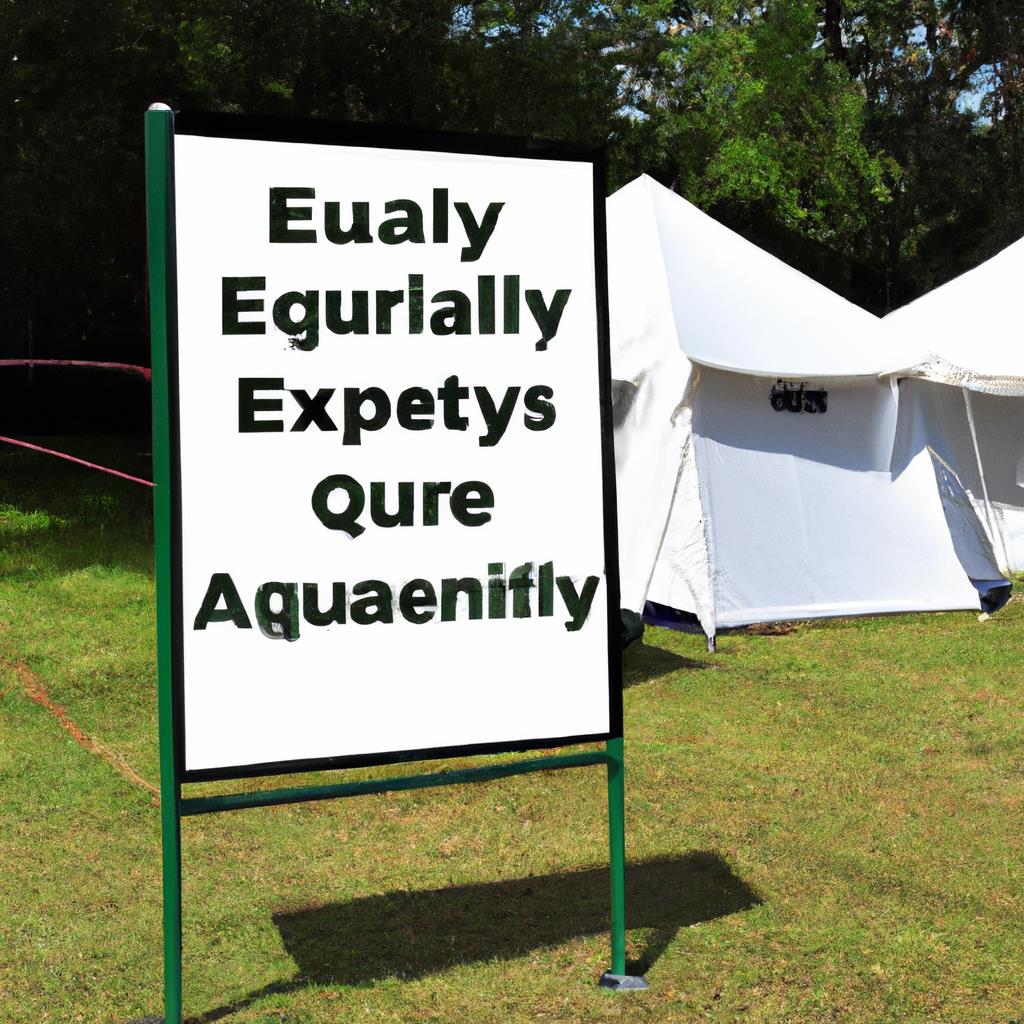Ensuring Equality- ADA Accessible Campsites for Tenting and Camping Site
Accessibility is an important aspect of any public space, including camping and tenting sites. Everyone deserves the opportunity to enjoy the great outdoors, regardless of physical ability. That's why it's crucial to ensure that campsites are ADA accessible, accommodating individuals with disabilities so they can fully participate in outdoor activities.
When it comes to camping and tenting sites, there are a few key considerations that need to be taken into account to ensure equality and accessibility for all. These include accessible parking, pathways, bathrooms, and tent sites.
Accessible parking is essential for individuals with disabilities to be able to access campgrounds. There should be designated parking spaces close to the campsite entrance that are wide enough to accommodate wheelchair lifts and ramps. Additionally, there should be clear signage indicating where accessible parking is located and how to access it.
Pathways throughout the campground should also be accessible to individuals with mobility impairments. Paths should be wide enough to accommodate wheelchairs, strollers, and walkers, with a firm and stable surface that is easy to navigate. Additionally, pathways should be free of obstacles such as rocks, roots, and debris that could pose a hazard to individuals with disabilities.
Bathrooms at camping and tenting sites should also be ADA accessible, with features such as grab bars, accessible sinks, and toilets, and wide enough doorways for wheelchair access. There should also be clear signage indicating which bathrooms are accessible and how to access them.
When it comes to tent sites, there should be designated ADA accessible sites that are flat and level, with a firm surface that is easy to navigate. Tent sites should also be close to accessible parking and pathways, with clear signage indicating which sites are accessible.
Ensuring equality and accessibility for individuals with disabilities at camping and tenting sites is not only the right thing to do, but it also benefits everyone. By making campsites ADA accessible, campgrounds are welcoming a wider range of visitors and creating a more inclusive environment for all. Additionally, accessible campsites can attract new visitors and increase revenue for campgrounds.
There are several ways that campgrounds can ensure equality and accessibility for individuals with disabilities. One way is by conducting an accessibility audit of the campground to identify areas that need improvement. This could involve hiring a consultant or working with a disability advocacy organization to assess the accessibility of the campground and make recommendations for improvements.
Another way that campgrounds can ensure equality and accessibility is by training staff on how to interact with individuals with disabilities. This could involve providing sensitivity training on disability etiquette, as well as training on how to assist individuals with disabilities in navigating the campground and accessing amenities.
Additionally, campgrounds can work with local disability advocacy organizations to get feedback on their accessibility efforts and make improvements based on that feedback. By collaborating with organizations that represent individuals with disabilities, campgrounds can ensure that they are meeting the needs of all visitors.
In conclusion, ensuring equality and accessibility for individuals with disabilities at camping and tenting sites is essential for creating a welcoming and inclusive environment for all. By making campsites ADA accessible, campgrounds can attract new visitors, increase revenue, and provide a more enjoyable outdoor experience for everyone. By following the guidelines outlined above, campgrounds can ensure that they are meeting the needs of all visitors and creating a more inclusive environment for all.


leave a comment